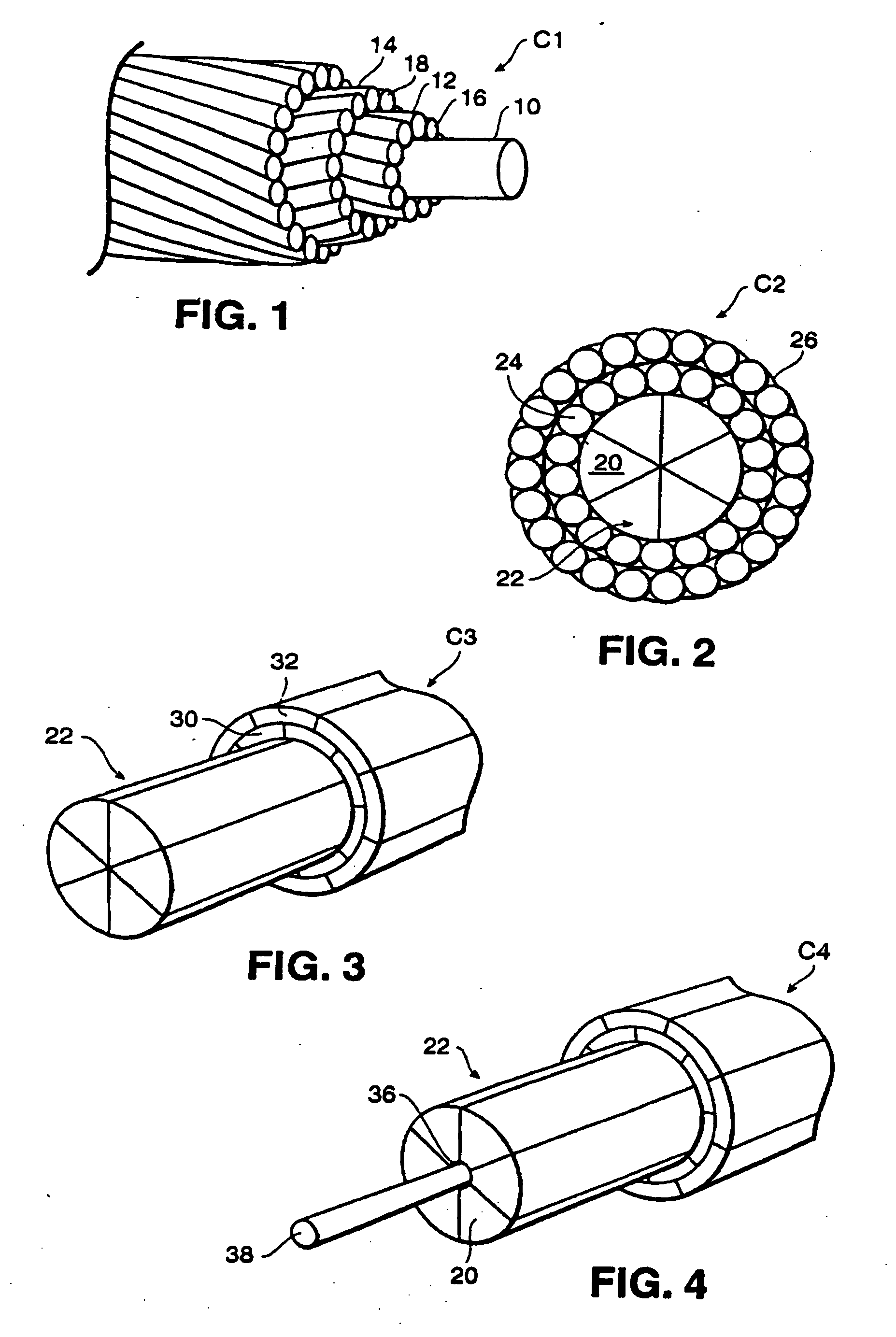Method for increasing the current carried between two high voltage conductor support towers
a high-voltage conductor and support tower technology, applied in the direction of insulated conductors, cables, instruments, etc., can solve the problems of success of current-carrying conductors, and achieve the effect of less labor intensity, easy reheating, and same strength
- Summary
- Abstract
- Description
- Claims
- Application Information
AI Technical Summary
Benefits of technology
Problems solved by technology
Method used
Image
Examples
Embodiment Construction
[0049] Referring now in more detail and by reference characters to the drawings, which illustrate preferred embodiments of the present invention, C1 illustrates an electrical transmission cable having a reinforced plastic composite load bearing core 10 and a plurality of outer layers of aluminum wire 12 and 14 extending thereabout.
[0050] By further reference to FIG. 1, it can be seen that the load bearing core 10 includes a solid reinforced plastic composite member. Also, in the embodiment as illustrated in FIG. 1 and the subsequently illustrated and described embodiments, there are three outer aluminum layers 12, 18 and 14 (see FIG. 1), although it should be understood that any number of outer layers could be employed depending upon the desired thickness of the outer current conducting sheath to be formed over the core. It can be observed that in this construction, the cable C1 is similar in appearance to a conventional steel core cable. Consequently, it can be laid in the same fa...
PUM
| Property | Measurement | Unit |
|---|---|---|
| Diameter | aaaaa | aaaaa |
| Current | aaaaa | aaaaa |
| Electrical conductor | aaaaa | aaaaa |
Abstract
Description
Claims
Application Information
 Login to View More
Login to View More - R&D
- Intellectual Property
- Life Sciences
- Materials
- Tech Scout
- Unparalleled Data Quality
- Higher Quality Content
- 60% Fewer Hallucinations
Browse by: Latest US Patents, China's latest patents, Technical Efficacy Thesaurus, Application Domain, Technology Topic, Popular Technical Reports.
© 2025 PatSnap. All rights reserved.Legal|Privacy policy|Modern Slavery Act Transparency Statement|Sitemap|About US| Contact US: help@patsnap.com



